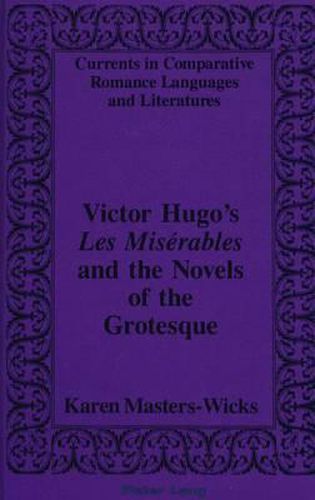Readings Newsletter
Become a Readings Member to make your shopping experience even easier.
Sign in or sign up for free!
You’re not far away from qualifying for FREE standard shipping within Australia
You’ve qualified for FREE standard shipping within Australia
The cart is loading…






This important study focuses on the novels of Victor Hugo, one of the most well-known French authors of the nineteenth century. Through close readings of his most celebrated narratives, Les Miserables and Notre Dame de Paris; his juvenelia, Han d'Islande, Bug-Jargal, and Le Dernier jour d'un condamne; and his later fiction, Les Travailleurs de la mer, L'Homme qui rit, and Quatrevingt-treize, the author breaks new ground in her elaboration of the problem of the grotesque esthetic between Hugo’s novels and his romantic manifesto of 1827, the Preface de Cromwell, in which he argues for inclusion of the grotesque as an esthetic part of the new romantic drama. This modern esthetic of contrast thus becomes the point of departure from which his narrative springs. It is the cornerstone of the differentiation between romantic and classical literature. Hugo takes as his starting point the breakdown of all esthetic codes and creates a new framework for reading literature, that is, a romanticism of overcodified deformations.
$9.00 standard shipping within Australia
FREE standard shipping within Australia for orders over $100.00
Express & International shipping calculated at checkout
This important study focuses on the novels of Victor Hugo, one of the most well-known French authors of the nineteenth century. Through close readings of his most celebrated narratives, Les Miserables and Notre Dame de Paris; his juvenelia, Han d'Islande, Bug-Jargal, and Le Dernier jour d'un condamne; and his later fiction, Les Travailleurs de la mer, L'Homme qui rit, and Quatrevingt-treize, the author breaks new ground in her elaboration of the problem of the grotesque esthetic between Hugo’s novels and his romantic manifesto of 1827, the Preface de Cromwell, in which he argues for inclusion of the grotesque as an esthetic part of the new romantic drama. This modern esthetic of contrast thus becomes the point of departure from which his narrative springs. It is the cornerstone of the differentiation between romantic and classical literature. Hugo takes as his starting point the breakdown of all esthetic codes and creates a new framework for reading literature, that is, a romanticism of overcodified deformations.